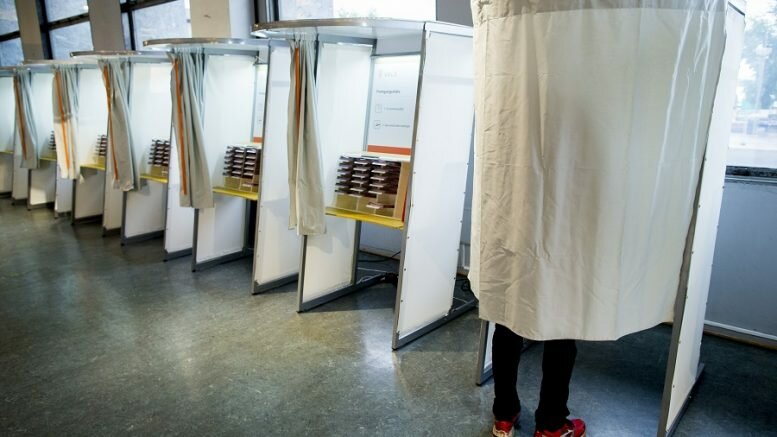Ordinary pre-voting in this year’s parliamentary elections will start on 10 August, but from Monday 3 July it is possible to have an early start.
However, if voting between 3 July and 9 August, the ordinary ballot papers with candidate names will not be ready. Instead, you can vote using ballot papers containing the names of all registered political parties in Norway only.
The ordinary pre-voting period is from 10 August to 8 September.
Early voting is intended for persons who do not have the opportunity to vote on the election day itself or who do not have the time to make use of the ordinary advance vote .
In some municipalities it is only possible to turn up in the municipality’s opening hours, while in others you must contact the municipality and arrange for a time. All you need to bring is a valid ID.
The proportion increases
Electoral Researcher Anders Todal Jenssen at NTNU points out that the number of pre-votes gives an indication of how large the election participation will be total.
The proportion of pre-election voters has increased, and between 30 and 40 per cent of Norwegian voters now take advantage of this opportunity.
– ” This is because the possibility for pre-voting has improved. Very many live busy lives and are on the move. On election day there are often long queues at the polling stations, and then it is better for many to come by beforehand, ” says Todal Jenssen.
He points out that previously, people with high education and high social status were pre-voting. But the more that vote in advance, the less obvious the group will be.
– Traditionally, there have been parties that appeal to voters with higher education and high social status, and who also benefit from early voting. This is especially true for the parties like SV, Hoyre and Venstre. But now we see that the pre-voting is spreading equally, he says.
At the previous parliamentary elections in 2013, 30.2 percent of the votes were cast before the election day. From 2005 to 2013, the percentage of pre-votes increased by 18.1 percentage points. Election participation was 1.8 per cent higher in 2013 compared with the election four years earlier, according to Statistics Norway.
Many “faithful “
What consequences can the voters face before the election campaign ends?
– If you pre-vote, you can change your mind and vote afresh.
It does not therefore have to have major consequences if the voters look completely different at the world closer to the election day, “says Todal Jenssen, adding that 60 per cent of Norwegian voters nevertheless have a firm party affinity.
“There are degrees of steadyness, but 30 to 40 percent of Norwegian voters are strong in their conviction, and never change party preference.
From July 3, it is also possible for voters who do not have the opportunity to attend a polling station during the pre-voting period due to illness or disability, to apply for pre-voting at their home.
© NTB Scanpix / Norway Today
————–




